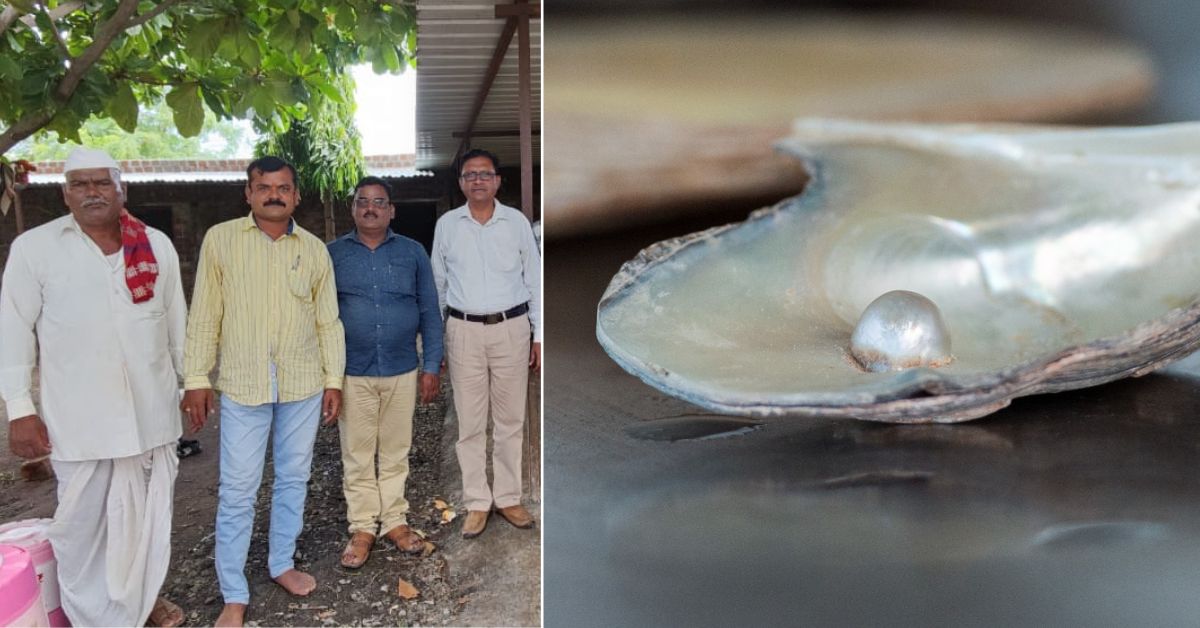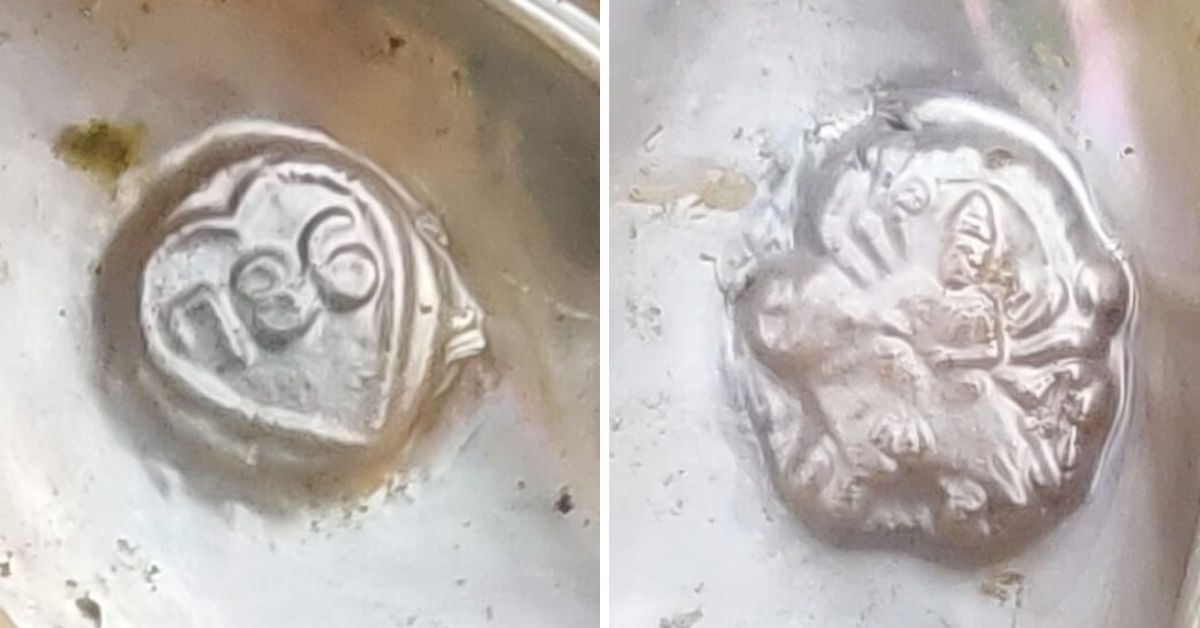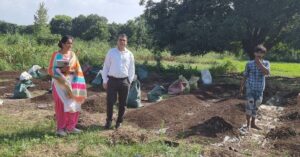When Droughts Led to Losses, Oyster Pearl Farming Helped Marathwada Farmers Reap Huge Profits
Having incurred huge losses because of recurring droughts, 10 farmers from Osmanabad, Maharashtra, switched to oyster pearl farming to reap profits. One of the farmers, Sanjay Pawar shares six tips for beginners.

With uncertain rainfall patterns and irrigation canals completely drying up, cultivation in the parched land of the Osmanabad district has become exhausting for farmers. Lying under the rain shadow region of Marathwada, the district faces acute water scarcity.
Growing input costs and unfair market prices have severely affected the output and yield of the major crops of the region — like soybean, sugarcane, sorghum, and millet. The compounding debts put Maharashtra farmers under a huge economic burden.
Sadly, the recurring droughts force farmers to sometimes end their lives. The government’s National Crime Records Bureau (NCRB) data revealed that a total of 10,881 persons involved in the farming sector died by suicide in 2021. With 37.3 percent, Maharashtra accounted for the highest number of farmer deaths.
Interestingly, a bunch of impoverished farmers have turned to cultivating oyster pearls in the water-starved Marathwada to overcome the challenges posed by recurring droughts and low crop yields.
One such farmer is Sanjay Narsing Pawar.
Along with nine other small-scale farmers, Sanjay harvested 8,000 pearls in an acre of pond, earning them Rs 40 lakh. We sat down with him to understand the nitty-gritty of oyster pearl farming.

Harvesting pearls in water-scarce land
After pursuing a Diploma in Medical Laboratory Technology (DMLT), Sanjay works part-time as a lab assistant. But farming comes naturally to him as for generations, his family has been cultivating traditional crops. However, agriculture hardly reaped the family any profits.
“This year, we did not get rain at all. We did sow soybeans and other crops, but we did not get any output. It has become difficult to even earn back the input costs,” he tells The Better India.
A couple of years back, the 45-year-old even established a water bank in an acre of land for irrigation purposes. In 2020, he turned to fish farming to utilise the water bank but the initiative was dead in the water.
“Fish farming did not prove profitable for us as it required a lot of input costs. If we sold a fish for Rs 100, we would incur expenses of Rs 80. We were only left with Rs 20 profit. It was very little,” he adds.
In 2021, Sanjay came across a news report that mentioned the profitability of oyster pearl farming. Motivated to try his hands in cultivating oysters, he bought 25,000 oysters to cultivate in his water bank. For this, he also roped in other farmer friends.
With a collective investment of Rs 20 lakh, the group started oyster farming. And in a year, they were able to generate an income of Rs 40 lakh by selling 8,000 pearls.
![Farmers perform minor surgery to implant plain or designed pearls [an artificial nucleus] into the tissue of a pearl oyster.](https://en-media.thebetterindia.com/uploads/2023/11/oyster-1-1700658836.jpg)
Seeing their success, about 40 farmers have joined Sanjay and his cooperative ‘Bless All Pearl Farmer Producer Company’. Together, they have planted 50,000 oysters and collaborated with companies like GKP Pearl Farm of Solapur and Namo Pearl Farm in Chandrapur to sell their produce.
The cooperative is set to harvest its second batch in the upcoming December month.
Six tips for beginners
Although the group was able to generate a handsome profit in their very first attempt, the success rate, Sanjay says, was not as estimated.
In 2022, the progressive farmer travelled to Bhubaneswar — 1,400 km from his village — to get formal training in oyster pearl farming. He attended a seven-day training at the Central Institute for Freshwater Aquaculture (CIFA) in Odisha.
“There, I was taught how to source raw material, how to nucleate oysters, the kind of pearl designs that are in demand, what food to offer oysters, the surgical procedure of pearls, how to keep oysters in antibiotics, and what is its lifecycle,” he says.

Explaining how pearls are cultivated, Sanjay says, “First, we source good quality oysters. Then, we perform minor surgery to implant plain or designed pearls [an artificial nucleus] into the tissue of a pearl oyster. The oyster is closed and is kept on antibiotics inside a smaller water tank for two to three days and then shifted to a bigger pond.”
“The oyster then secretes nacre [a form of calcium carbonate] around the nucleus. The pearls get readied to be harvested in 12 to 14 months,” he adds.
Sanjay shares tips on how to start oyster pearl farming for beginners:
How to identify good oysters: Sanjay says that it is much easier to cultivate oysters and earn a decent income provided you cultivate good quality oysters.
“Source good quality oysters to get A-grade quality pearls. The size of the oyster should be between 2.5 to 3 inches. Its outer cover should be golden in colour,” he says.
Know the market: Sanjay highlights that usually ‘designer debris’ or ‘irritants’ in the shape of Hindu deities Ganesha, Rama, Shiva, the Ashoka Chakra, 786 (holy number in Islam), Chhatrapati Shivaji Maharaj, etc are implanted in the oyster.
“The final pearls come out in the shape of these symbols,” he explains. Sanjay adds, “You should be informed about the market demand. If you implant the nucleus of Ganesh ji, and go to sell in a Ram temple, then it would not be profitable.”

Master the easier surgery: Sanjay says that there are several types of surgical procedures in pearl cultures — like gonadal implantation, mantle tissue implantation, and mantle cavity insertion.
“I suggest that farmers learn mantle tissue surgery as it is easier to perform and the chances of oysters are higher as compared to other kinds,” he says.
Prepare the pond: Sanjay informs that it is important to provide a river-like ecosystem for oysters.
“Oysters should not feel alienated and that they are outside a river. They must have a river-like environment to thrive. To ensure this, you must introduce algae inside the pond. Algae is the major food source of an oyster,” he adds.
Check the pH: Sanjay points out that farmers should ensure a pH of eight inside the water tank. “If pH is more than eight (alkaline), oysters will not survive. You should also check pH levels weekly. If the pH is higher, keep changing the water.”
“If you have a 20×20 square feet pond with 10 feet depth, it would have the capacity to store one lakh litre water. So, you should replace at least 10,000 litres of water in every batch,” he adds.
Maintain the temperature: Given its geography, Sanjay says that Osmanabad has a fluctuating temperature between 20 and 40 degrees throughout the year.
“In oyster pearl farming, we must ensure a temperature of 32 degrees Celsius. It should not exceed 35 degrees. We have externally used aerators to regulate the temperature inside the water bank. It also boosts fresh algae growth and provides new micronutrients,” he says. If you found our stories insightful, informative, or even just enjoyable, we invite you to consider making a voluntary payment to support the work we do at The Better India. Your contribution helps us continue producing quality content that educates, inspires, and drives positive change. Choose one of the payment options below for your contribution- By paying for the stories you value, you directly contribute to sustaining our efforts focused on making a difference in the world. Together, let’s ensure that impactful stories continue to be told and shared, enriching lives and communities alike. Thank you for your support. Here are some frequently asked questions you might find helpful to know why you are contributing?

Edited by Pranita Bhat; All photos: Sanjay Pawar
This story made me
-
97
-
121
-
89
-
167














